
In Images: Volcanic Monoliths of the American West
Sedimentary rock
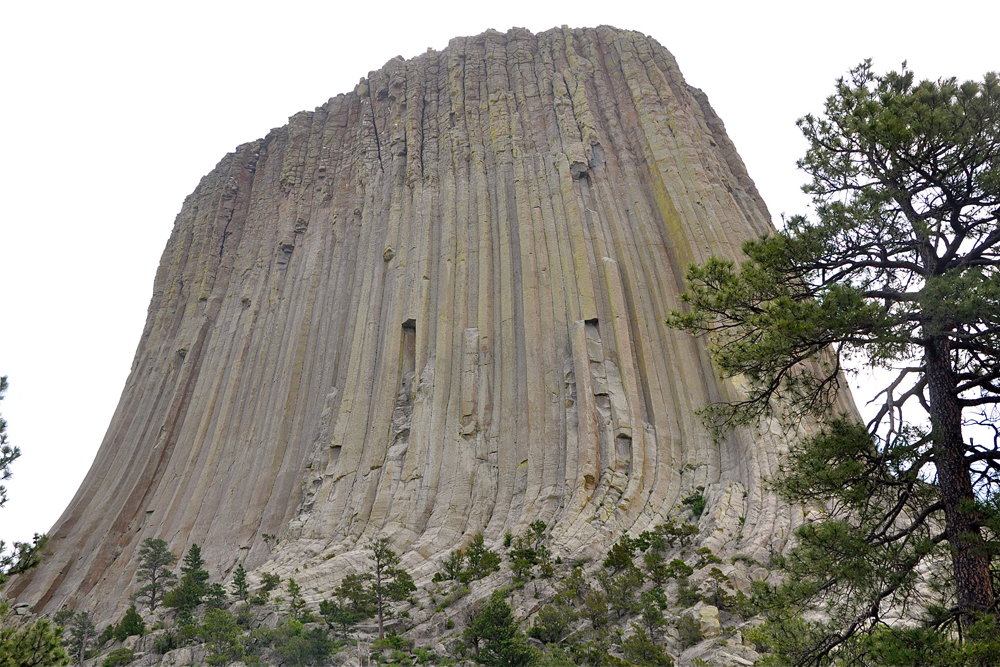
Sedimentary rock is the main classification of rocks that surround Devils Tower certainly normal for an area that once was covered by a shallow sea and that includes the red sandstone cliffs of the Belle Fourche River. Some 65 million years ago a continental uplift began the formation of the Rocky Mountains and the Black Hills. Magma flowing from deep within the earth accompanied this uplift.
Mysterious tower
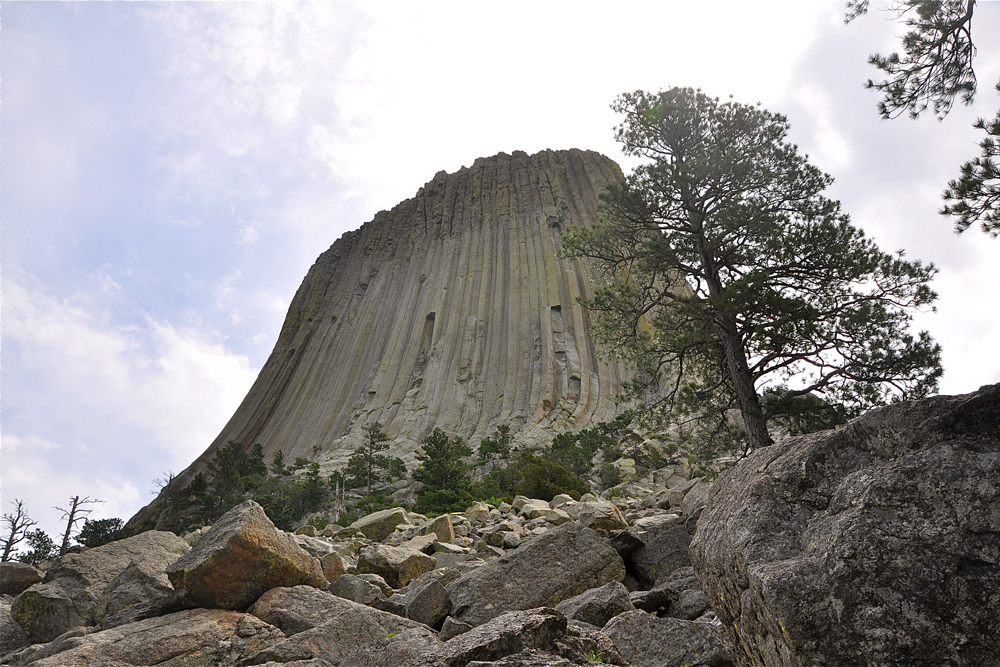
Geologists long thought that Devils Tower was a classic volcanic plug of an ancient volcano from this long ago period of time. But a problem with the volcanic plug theory arises due to the lack of volcanic materials near or around Devils Tower. If an ancient volcano once stood here, the eroded remains of its cone would surely be found for miles around its volcanic plug.
Lacolith
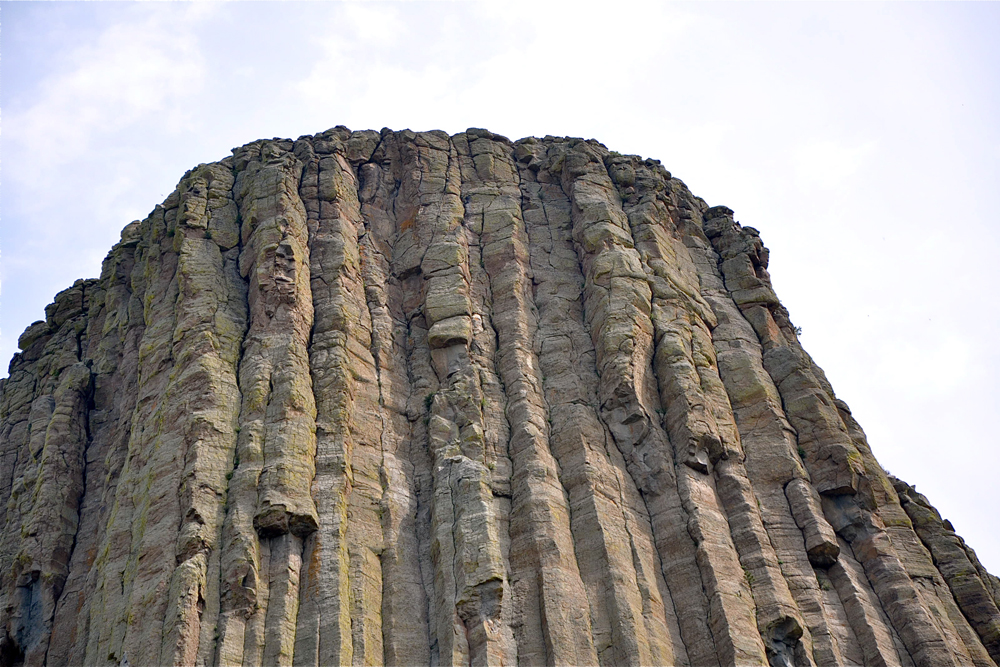
A more favorable theory has arisen suggesting that Devils Tower is the remains of a lacolith. A lacolith is an intrusion of magma between two layers of sedimentary rock. The resulting pressure forces the sedimentary strata upward resulting in a dome-like form. Over millions of years, ancient rivers and the elements of erosion wore away the soft sedimentary rock, exposing the hardened magma lacolith. There is still a large amount of sedimentary materials near the base of Devils Tower that gives support to this theory. If this theory is correct, the top of Devils Tower first became visible some 1 million to 2 million years ago.
Columns
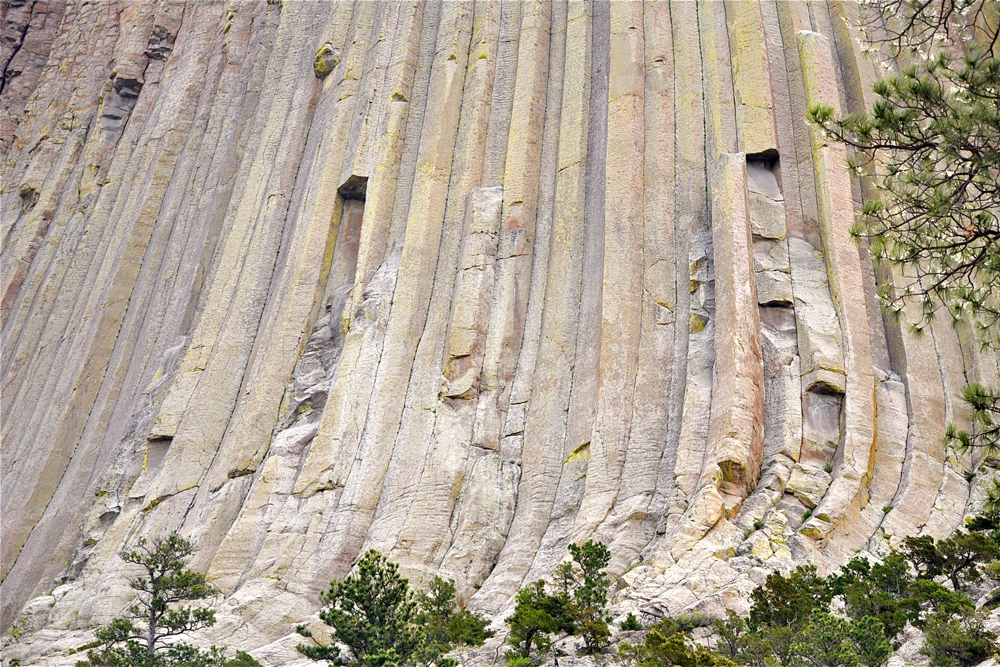
The igneous rock of Devils Tower is composed of phonolite porphyry, a greenish-gray rock with crystals of the mineral feldspar. As the magma cooled, eight-sided vertical columns also formed. As the cooling continued, these columns contracted in size and pulled away from each other, creating the unique vertical furrows found on the sides of Devils Tower from top to bottom.
Base of the Tower
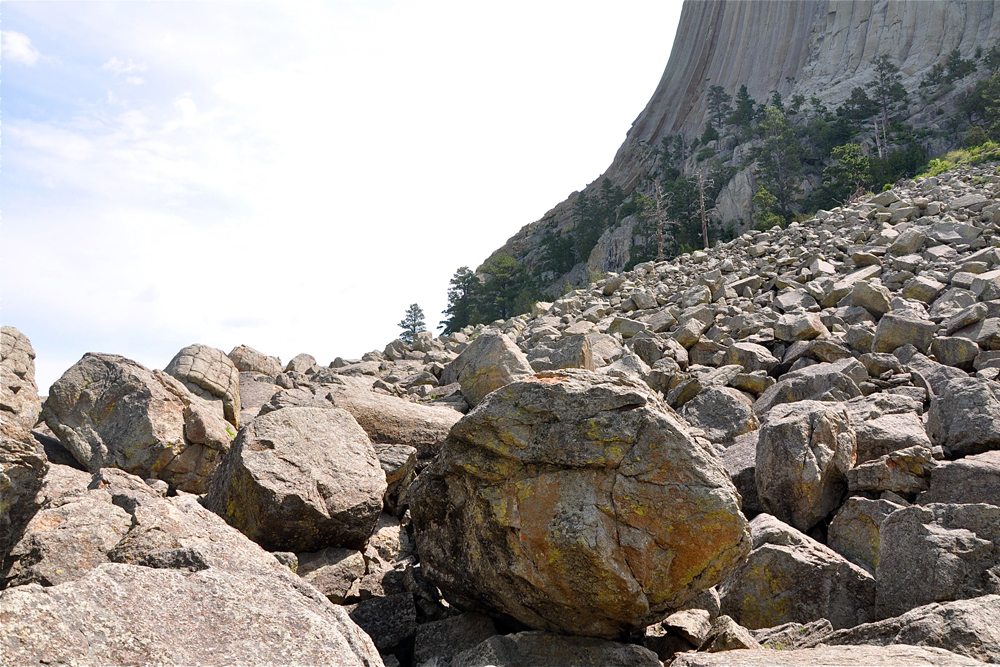
Devils Tower itself is not immune to the forces of erosion. The large boulder field of igneous rocks around the base of the tower is evidence that Devils Tower is also slowly losing the battle with the eroding forces of nature.
Successful climb
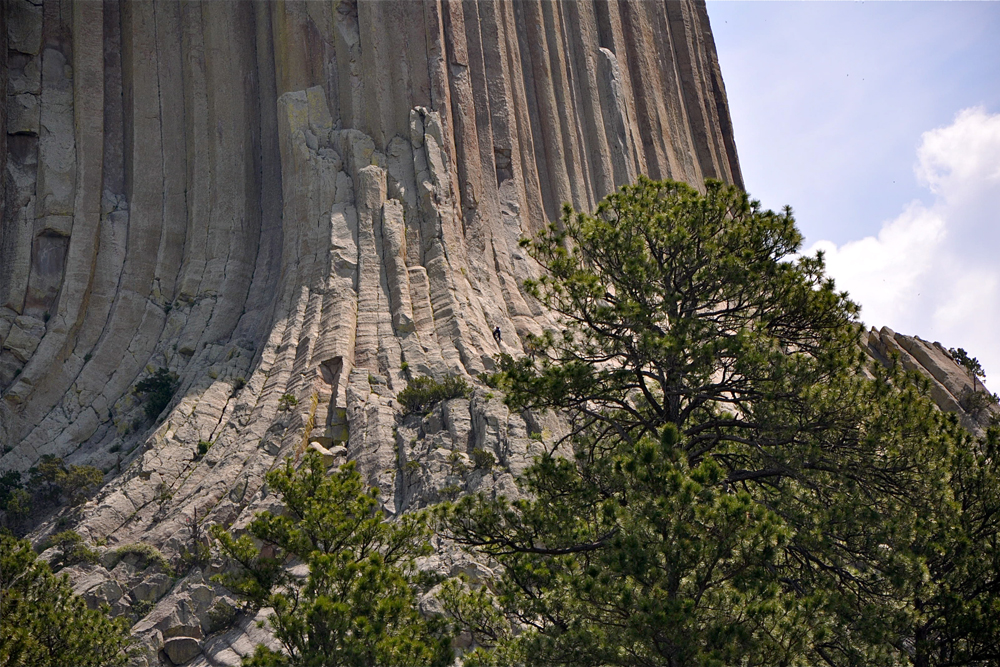
The first successful climb of Devils Tower occurred on July 4, 1893, when local rancher William Rogers used a series of ladders held to the tower by pegs driven into the vertical furrows. Rogers may have been the first to scale the magnificent obelisk but he is surely not the last. Today only about 1 percent of the 400,000 annual visitors make the effort to use free climbing techniques with safety ropes and steel wedges to ascend to the top of Devils Tower.
Crown jewel
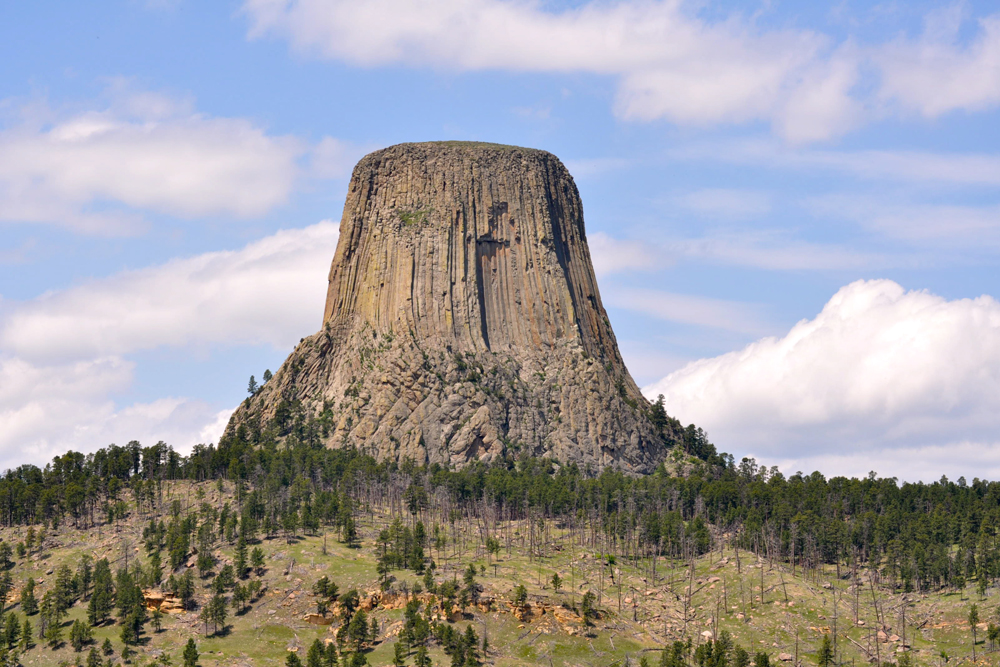
Devils Tower, the crown jewel of the volcanic monoliths of the American West, was designated America's first National Monument by President Theodore Roosevelt on Sept. 24, 1906. When the official proclamation establishing Devils Tower National Monument was published, the apostrophe that was initially in "Devil's" was unintentionally dropped. This clerical error has never been officially corrected.
Sign up for the Live Science daily newsletter now
Get the world’s most fascinating discoveries delivered straight to your inbox.










